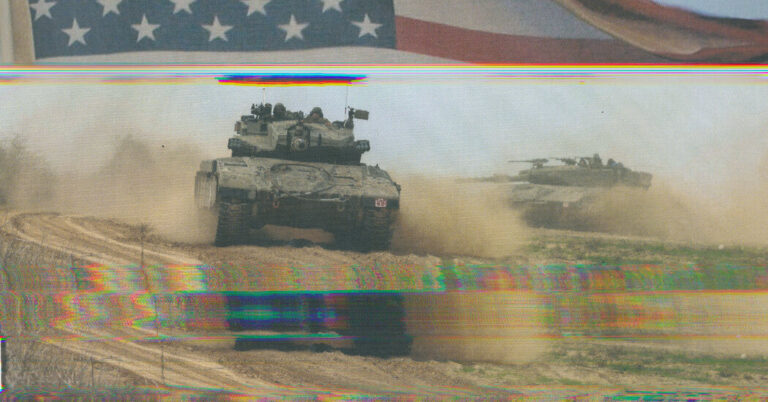But young people, according to polls, felt uncertain about American involvement in Ukraine. The binary of democracy versus authoritarianism didn’t ring true for a generation that had begun questioning the meaning of democracy at home and abroad. They lived with a sense of doom around climate change and many had embraced Black Lives Matter protests, both of which taught them about American hypocrisy and the preciousness of human life. “We have trouble with the idea that our nation has a right to lecture any other,” the young editors of the magazine The Drift wrote in June 2022. (I have taught international affairs to 20-year-olds for the last three years, so I have had exposure to these sentiments.) Many Americans had been left with a void in their emotional landscape, an unanswered question about the American project: If the war on terror was something imagined by a democracy, then what was a democracy? What is a democracy that kills so many people?
As of this writing, the Israeli military has killed around 20,000 Palestinians and wounded 52,000, according to Gazan health authorities. That death toll includes an estimated 7,000 children. It has killed more than 60 journalists, over 130 U.N. aid workers, poets and cooks and teachers and I.T. specialists and mothers. The bombing is worse — faster, heavier, more indiscriminate — than what the Americans did in Iraq, Syria or Afghanistan. But it is also reminiscent of all the wars there.
One major difference between the killing in 2023 and the killing during the war on terror is that now we are seeing the devastation in real time. America censored much of the wars in Iraq and Afghanistan, but we are experiencing the Gaza war in videos and photos and data charts every day, particularly on social media platforms like TikTok and Instagram and X, depending, again, on one’s generation. In November I opened X and saw a video credited to the photojournalist Motaz Azaiza in which Palestinians discover — and the video’s perspective made it feel as if I was discovering it, too — a slab of concrete, maybe a wall, maybe a roof, something enormous and heavy, and beneath it what appears to be the legs of four children, their upper bodies crushed and hidden by the concrete that a bomb had brought down on them. They were all there together like that likely because they had been in bed, asleep.
Americans can see such images every day, all day, almost in real time. The invisible war has been made ruthlessly visible, even experiential; we see Palestinians post on social media against the war one day and learn of their deaths the next. Many see what is happening to Palestinians and recognize what has happened to Arabs and Muslims for decades, as if recovering repressed memories. The rise of so-called smart bombs and drones — as well as an undercurrent of persistent American innocence — once compelled us to believe that the United States and its allies at least attempted to preserve civilian life. But right now “civilian casualties,” a phrase that implies regret, has lost any meaning entirely.
Rarely has the rhetorical chasm between us and our leaders felt so surreal. Hearing their bland strategy-speak and clinical language — especially after witnessing violence on social media all day — activates feelings of despair, distrust and even bewilderment. “Government spokespeople are calculating and insincere,” the American Palestinian Lebanese academic Saree Makdisi wrote in n+1. “The ultimate nihilists, they don’t actually believe in anything, least of all anything they say themselves.” Fintan O’Toole once wrote that, during the war in Afghanistan, “linguistic obfuscation attained the zenith of sinister absurdity.” The phrase “humanitarian pause,” which seems to suggest that killing is the norm and living is the exception, proves that even sinister war on terror rhetoric can be outdone.

